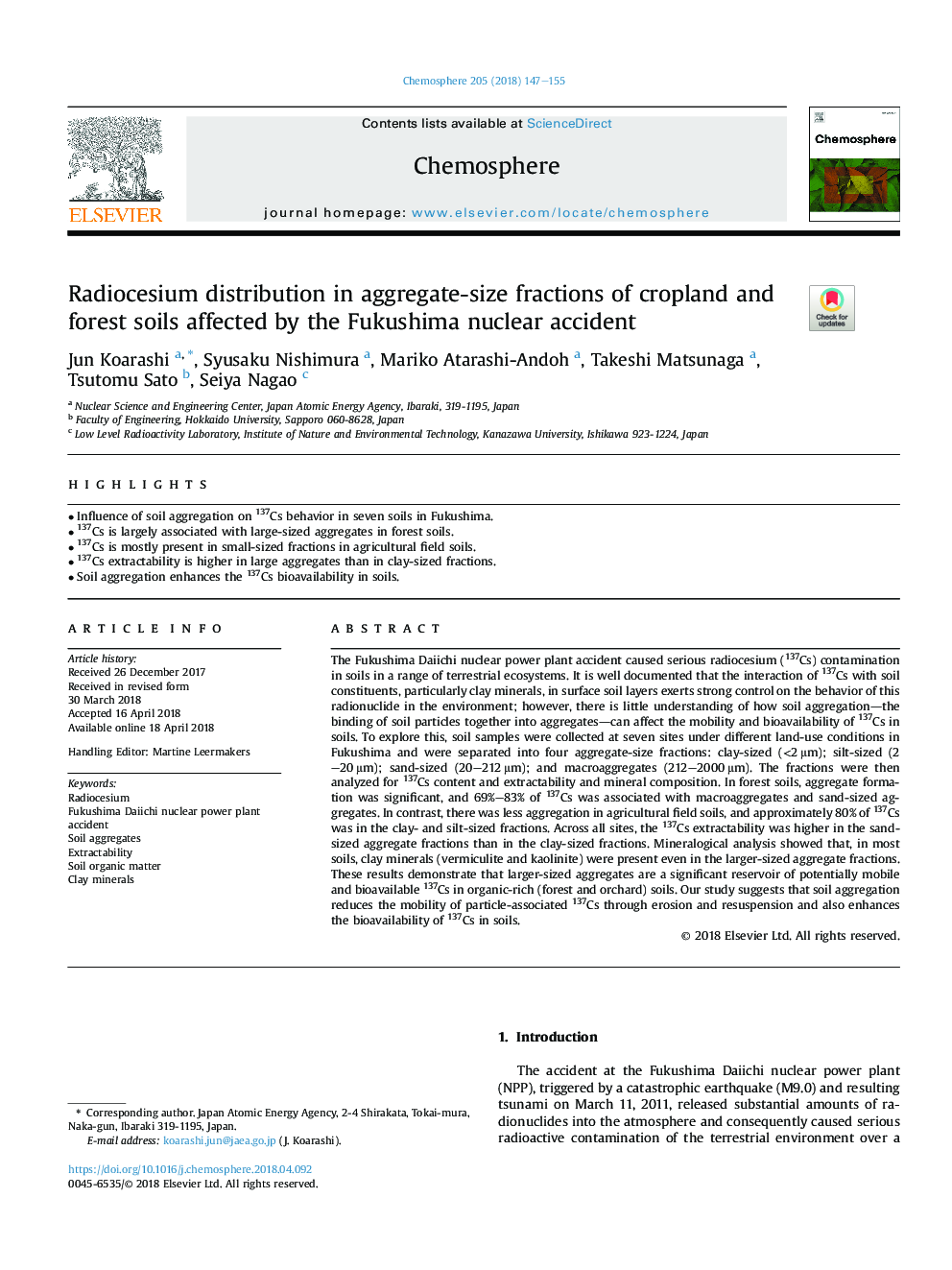| کد مقاله | کد نشریه | سال انتشار | مقاله انگلیسی | نسخه تمام متن |
|---|---|---|---|---|
| 8851031 | 1618766 | 2018 | 9 صفحه PDF | دانلود رایگان |
عنوان انگلیسی مقاله ISI
Radiocesium distribution in aggregate-size fractions of cropland and forest soils affected by the Fukushima nuclear accident
ترجمه فارسی عنوان
توزیع رادیسیسیوم در کسرهای کل خاک های گیاه شناسی و جنگل تحت تاثیر تصادفات هسته ای فوکوشیما
دانلود مقاله + سفارش ترجمه
دانلود مقاله ISI انگلیسی
رایگان برای ایرانیان
کلمات کلیدی
موضوعات مرتبط
علوم زیستی و بیوفناوری
علوم محیط زیست
شیمی زیست محیطی
چکیده انگلیسی
The Fukushima Daiichi nuclear power plant accident caused serious radiocesium (137Cs) contamination in soils in a range of terrestrial ecosystems. It is well documented that the interaction of 137Cs with soil constituents, particularly clay minerals, in surface soil layers exerts strong control on the behavior of this radionuclide in the environment; however, there is little understanding of how soil aggregation-the binding of soil particles together into aggregates-can affect the mobility and bioavailability of 137Cs in soils. To explore this, soil samples were collected at seven sites under different land-use conditions in Fukushima and were separated into four aggregate-size fractions: clay-sized (<2â¯Î¼m); silt-sized (2-20â¯Î¼m); sand-sized (20-212â¯Î¼m); and macroaggregates (212-2000â¯Î¼m). The fractions were then analyzed for 137Cs content and extractability and mineral composition. In forest soils, aggregate formation was significant, and 69%-83% of 137Cs was associated with macroaggregates and sand-sized aggregates. In contrast, there was less aggregation in agricultural field soils, and approximately 80% of 137Cs was in the clay- and silt-sized fractions. Across all sites, the 137Cs extractability was higher in the sand-sized aggregate fractions than in the clay-sized fractions. Mineralogical analysis showed that, in most soils, clay minerals (vermiculite and kaolinite) were present even in the larger-sized aggregate fractions. These results demonstrate that larger-sized aggregates are a significant reservoir of potentially mobile and bioavailable 137Cs in organic-rich (forest and orchard) soils. Our study suggests that soil aggregation reduces the mobility of particle-associated 137Cs through erosion and resuspension and also enhances the bioavailability of 137Cs in soils.
ناشر
Database: Elsevier - ScienceDirect (ساینس دایرکت)
Journal: Chemosphere - Volume 205, August 2018, Pages 147-155
Journal: Chemosphere - Volume 205, August 2018, Pages 147-155
نویسندگان
Jun Koarashi, Syusaku Nishimura, Mariko Atarashi-Andoh, Takeshi Matsunaga, Tsutomu Sato, Seiya Nagao,
